![]()
 | - 1930 - |  |
![]()
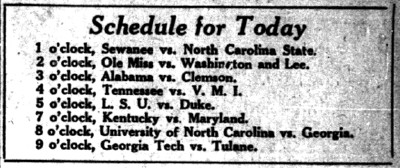 |
Game 1: Sewanee 25, North Carolina State 19
Game 2: Washington & Lee 33, Mississippi 29
Game 3: Alabama 31, Clemson 22
Game 4: Tennessee 28, Virginia Military 20
Game 5: Duke 43, Louisiana State 34
Game 6: Kentucky 26, Maryland 21
Game 7: Georgia 26, North Carolina 17
Game 8: Georgia Tech 53, Tulane 31
Quarterfinals: (Saturday, March 1, 1930)
Game 9: Alabama 29, Georgia 26
Game 10: Kentucky 44, Sewanee 22
Game 11: Tennessee 38, Washington & Lee 29
Game 12: Duke 44, Georgia Tech 35
Semifinals: (Monday, March 3, 1930)
Finals: (Tuesday, March 4, 1930)
Game 15: Alabama 31, Duke 24
![]()
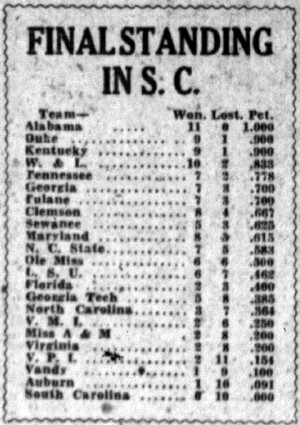 |
Of the schools which entered, Alabama, Duke, Washington & Lee and Kentucky were considered to be the favorites by the coaches. Al Doonan noted before the tournament began that $1,000 in advance ticket sales had already been booked, well ahead of previous years.
As with previous years, no team was allowed to practice on the raised court in the City Auditorium. Instead teams practiced at the Atlanta Athletic Club.
Two new officials joined Stanley Sutton to work the tournament. They were Bernard Eberts of Washington D.C. (alum of Catholic University) and George Wood of Jacksonville FL.
![]()
"Basketball is a queer game," [Kentucky football coach] Harry Gamage says by way of doing a little experting. "Every man must be quick witted and a fast thinker on a basketball team.
"One smart quarterback sometimes can carry along a whole dumb football team and make them look pretty good. But a basketball team must have five 'quarterbacks' in action at once.
"The game demands a fast thinker in every position all the time. One basketball player given to lapses in alertness can wreck the smart playing of four others." - ("Mawnin'!," by Ed Danforth, Atlanta Constitution, February 28, 1930.)
Friday, February 28, 1930 - First Round
Game 1: Sewanee 25, North Carolina State 19
|
|
Game 2: Washington & Lee 33, Mississippi 29 - (Overtime)
|
|
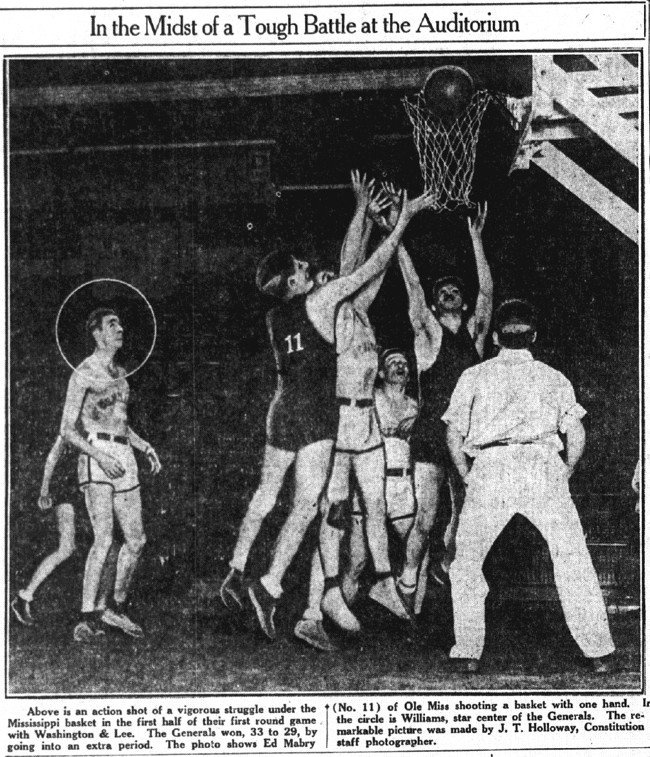
"Charley Graeber fired a long shot just as the finishing gun sounded to tie the score 28-2. Ole Miss, not considered a serious contender, had spent her strength, however, in the long, grim chase to overhaul the speedy Generals.
"In the extra period, the men from the northern section scored two field goals and a foul to win. Mabry's foul was the only Ole Miss score.
"The battle between the Generals and Ole Miss proved the real feature of the afternoon. Homer Hazel, Mississippi coach, had given his boys a new offense for use in the tournament.
"As a result Ole Miss showed a vast improvement over their showing before the tournament.
"The Generals got away to an early lead. Leigh Williams, the tall center who played end on the Northern eleven in the New Year's Day football game here, proved one of the smartest players seen here in years. His passing and shooting stamped him as one of the tournament stars if his team survives to the semi-finals." - ("Generals Beat Ole Miss, 33-29" Atlanta Constitution, March 1, 1930.)
Game 3: Alabama 31, Clemson 22
|
|
Game 4: Tennessee 28, Virginia Military 20
|
|
"Tennessee and the Cadets from V.M.I. started as if they were going to put on a baseball score in their meeting yesterday afternoon. The Vols won out, 28 to 20, in a slow contest but for nine and a half minutes after the start there was not a field goal scored and the count stood 1 and 1.
"The Vols started with Buddy Backman and Gene McEver, the football "Touchdown Twins," in the lineup but pulled them out when it became apparent that he Cadets were offering stubborn opposition.
"Bobby Dodd proved to be a good basketball player but it was Mike Lucas, who was the start for the Knoxville team. He injured his leg in the second half when he crashed into the side of an upright supporting the goal but is expected back in the lineup today.
The Vols meet an old rival, W. & L. this afternoon." - ("Vols Defeat V.M.I., 28 to 20" Atlanta Constitution, March 1, 1930.)
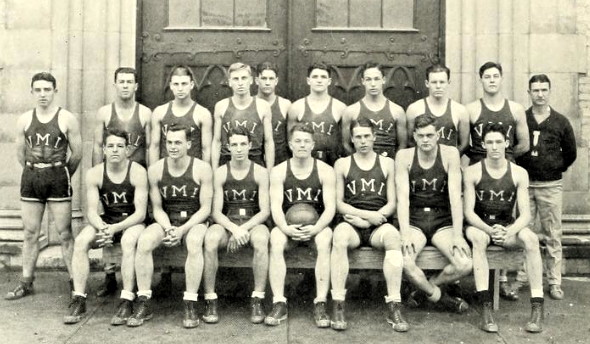 |
Game 5: Duke 43, Louisiana State 34
|
|
Game 6: Kentucky 26, Maryland 21
|
|
"The Kentucky Wildcats faced a very strong and determined club in the Maryland Ole Liners, who had a fine sharpshooter, named Berger, and the slickest passing gentleman we have seen in many days in a heavy-set chap named Radice. Mr. Radice was somewhat a magician. He would look one way and pass another. And his passes were like Dazzy Vance's speed ball." - (by Morgan Blake, Atlanta Journal, February 28, 1930.)
Game 7: Georgia 26, North Carolina 17
|
|
Game 8: Georgia Tech 53, Tulane 31
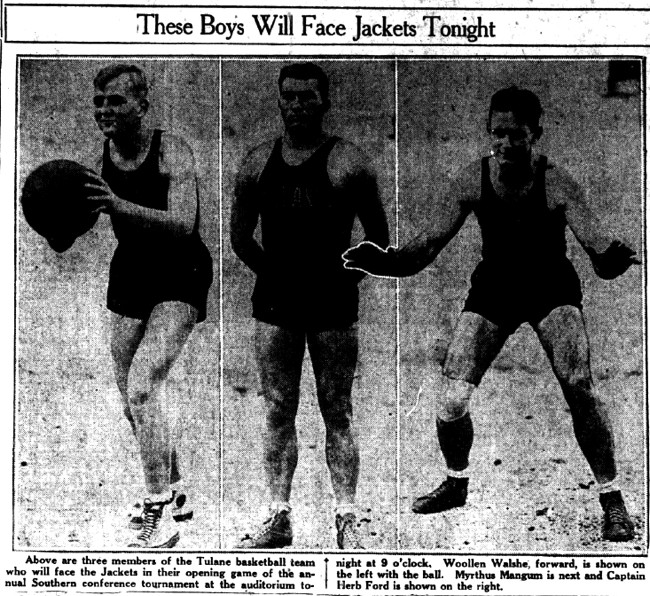 |
|
|
"It seemed to this scribe that the most outstanding feature of the entire day, even surpassing the feat of the gallant Sewanee Tigers in putting out the 1929 champions, was the brilliant showing of the Georgia Tech Yellow Jackets, for a long time the underdogs in tourney competition. In beating Tulane, 53 to 31, the Jackets made the highest score of the day, and showed a fast passing and accurate shooting game that had the Greenies groggy and on the ropes after the first five minutes of the second half. If Tech can keep up such a pace this afternoon against the great Duke team, the Blue Devils will not find the pathway to victory strewn with roses." - (by Morgan Blake, Atlanta Journal, February 28, 1930.)
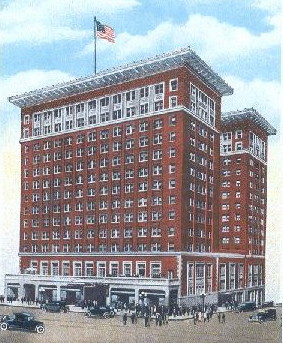 | 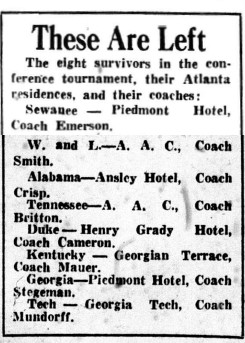 | 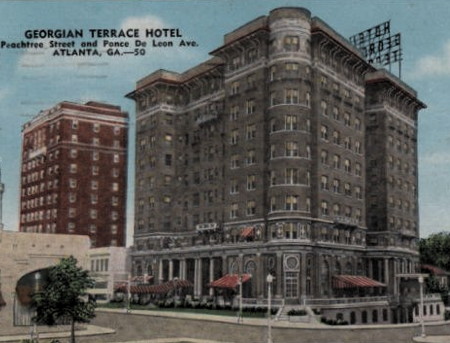 |
![]()
Saturday, March 1, 1930 - Quarterfinals
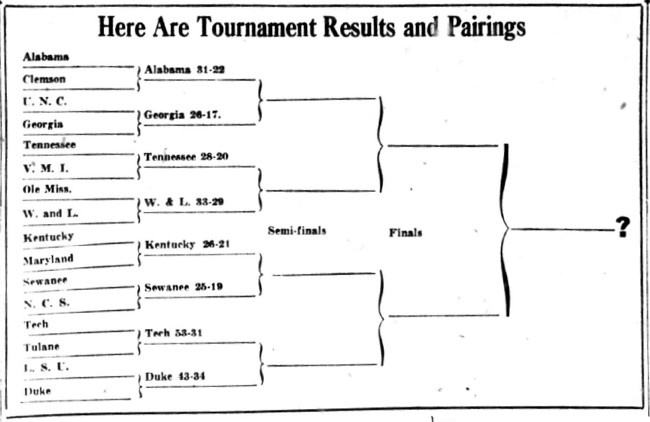 |
Game 9: Alabama 29, Georgia 26
|
|
"Alabama and Georgia both wore red shirts in the first round, and to avoid confusion each thought they would wear white on Saturday. When they both arrived on the court with white shirts the referee held up the game until Georgia could send for their red shirts." - ("Tournament Notes" by Frank A. Kopf, Atlanta Journal, March 2, 1930.)
Game 10: Kentucky 44, Sewanee 22
|
|
"The Kentucky-Sewanee engagement was a horse race for the first half. At the end of the first period the Tigers were behind by just 16 to 14. They continued their good playing for the early part of the second and at one time had tied the score 20 to 20. But they shot their bolt with that, and for the next fifteen minutes failed to make a single field goal. While the Tigers were getting 2 points on fouls the Wildcats were rolling up 24-points to make the game a runaway. The guarding of the Kentucky team in the last fifteen minutes was the finest defensive exhibition we have ever seen in a tournament." - ("Alabama Plays Tennessee; Kentucky Meets Duke Next," Atlanta Journal, March 2, 1930.)
Game 11: Tennessee 38, Washington & Lee 29
|
|
"Tennessee's hard Volunteers supplied the thrill of the second round of the Southern conference basketball tournament Saturday afternoon by eliminating the highly touted Washington and Lee Generals, 38 to 29. The Volunteers jumped into the lead soon after the start and held their advantage all the way." - ("Generals Upset by Volunteers" Atlanta Constitution, March 2, 1930.)
"The Tennessee players used yellow shirts with piped yellow numbers Friday, but they changed for white shirts with solid yellow numbers Saturday and they were much more visible." - ("Tournament Notes" by Frank A. Kopf, Atlanta Journal, March 2, 1930.)
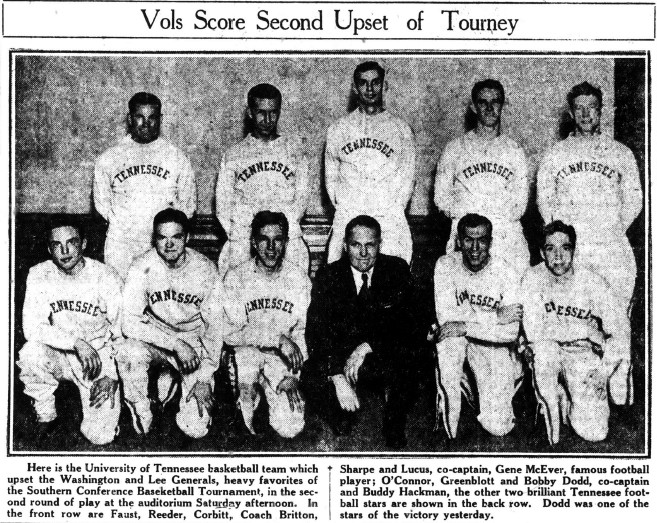 |
Game 12: Duke 44, Georgia Tech 35
|
|
"Croson of Duke looks like an all-tournament center. His greatest rival will probably be Hood of Alabama. He shoots well and is an almost impassable barrier under the basket for the other forwards." - ("Tournament Notes" by Frank A. Kopf, Atlanta Journal, March 2, 1930.)
![]()
Monday, March 3, 1930 - Semifinals
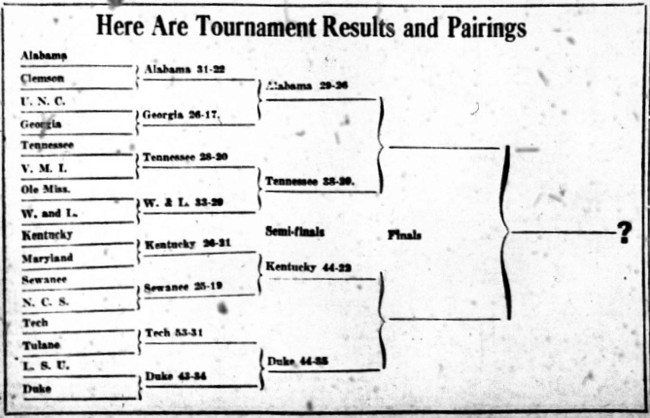 |
|
|
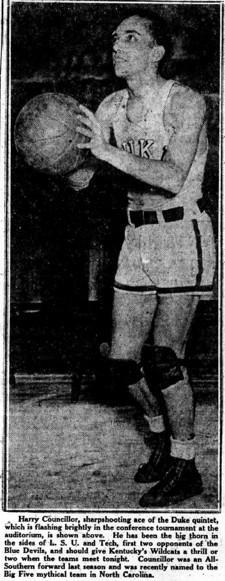 "The games were played before a packed auditorium. The crowd was surprisingly large, since neither Tech nor Georgia was engaged. The multitude manifested warm interest while the Crimson Tide and the Volunteers galloped and charged and retreated.
"The games were played before a packed auditorium. The crowd was surprisingly large, since neither Tech nor Georgia was engaged. The multitude manifested warm interest while the Crimson Tide and the Volunteers galloped and charged and retreated.
"But the clash between the Blue Devils of Duke and the Wildcats of Kentucky swept the congregation into an uproar. It was one of the most brilliantly played games the conference classic ever produced and was a neck-and-neck race down to the final gun.
"Duke made such an impressive showing in beating the weaving Kentuckians that the crowd left the hall feeling sort of sorry for Alabama's prospect in the finals. . ." - ("Devils Defeat Kentucky 37-32; Tide Wins, 32-22" by Ed Danforth, Atlanta Constitution, March 4, 1930.)
"The Kentucky team hung up a record that will stand for some time, too. They took 14 foul shots at the basket and made them count for 14 points. They can't do it much better than that in New York. . . THE RECORD OF KENTUCKY ON FOUL SHOTS PREVIOUS TO MONDAY'S GAME WAS 14 OUT OF 29. WHILE DUKE'S RECORD WAS 15 OUT OF 25." - ("Tournament Notes" by Frank A. Kopf, Atlanta Journal, March 4, 1930.)
"I know the Kentucky crew forgot their disappointment at having lost the semi-final game, long enough to declare that Manager Carter Barron, of the Capitol theater; Manager Bob Hicks , of the Paramount theater; and Briggs Pekor, publicity man of the Fox theater, deserved "K's" for their generous hospitality and that Atlantans in general made the time fly for them. The other squads passed out the same sort of bouquets." - ("No Foreign Bid Heard for Next Tournament," by Ed Danforth Atlanta Constitution, March 6, 1930.)
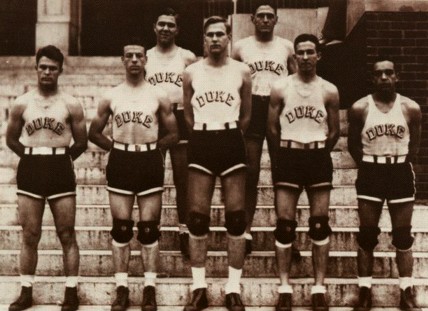 |
Game 14: Alabama 32, Tennessee 22
|
|
"A giant killer was slain on the auditorium court Monday night by a giant.
"Tennessee's fighting quintet, which kicked the Generals of Washington and Le out of the tournament in an upset Saturday night, was in turn bumped off by Alabama's Crimson Tide, seeded number one in the title fight.
"Towering 'Lindy' Hood took the heart out of the Vols. He stood in the neighborhood of the foul line time after time with every other Tidesman covered, did a leap-twist-toss, and scored. His points came at moments when they were needed. His 10 during the course of the game hurt the Tennessee cause with a terrible hurt." - ("Vols Sink in Tide, 32-22," by Herb Clark, Atlanta Constitution, March 4, 1930.)
![]()
Tuesday, March 4, 1930 - Finals
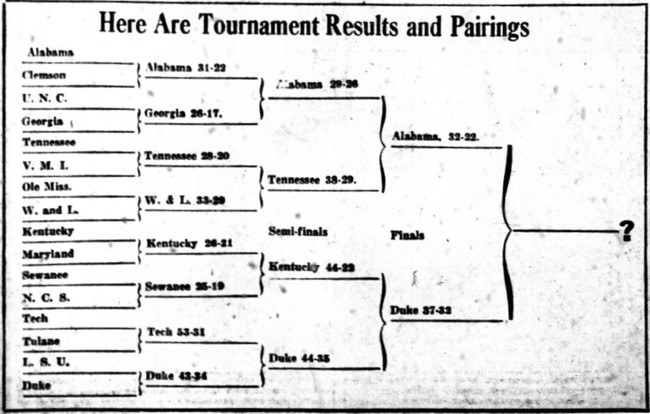 |
|
|
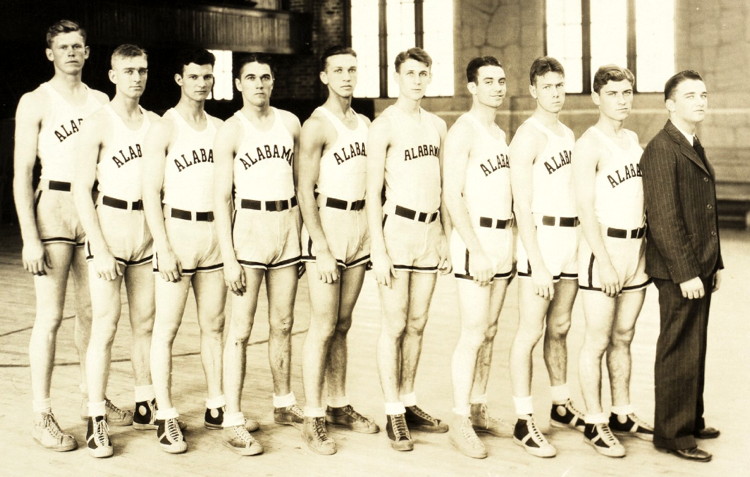 |
Left to Right: James "Lindy" Hood, Ed Kimbrough, Stewart Aiken, Leo O'Neill, Earl Smith, Malcolm Laney, Walter Laney, Paul Munkasey, Fred Wambsgans and Milton Pullen (Mgr.) |
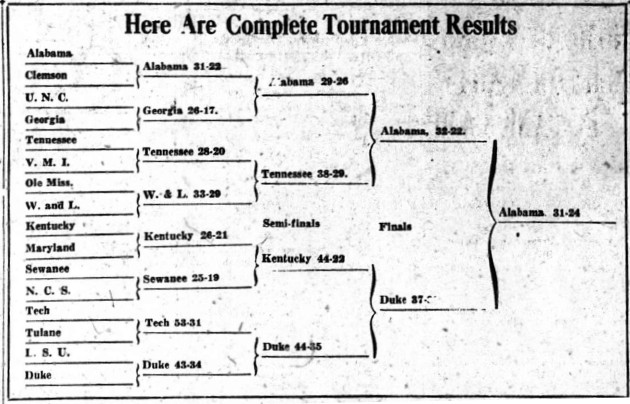 |
![]()
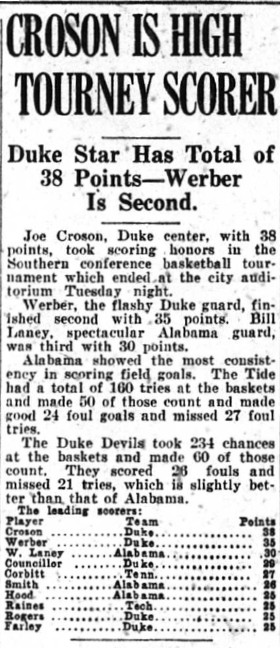 |
First Team
Louis Berger - Maryland
Maurice Corbitt - Tennessee
Harry Councilor - Duke
Lindy Hood - Alabama
Paul McBrayer - Kentucky
Bill Werber - Duke
Second Team
Joe Croson - Duke
Bobby Dodd - Tennessee
Bill Laney - Alabama
Sandford Sanford - Georgia
Earl Smith - Alabama
Even though they were the runner-up, Duke had two players named to the First Team All-Tournament team, Bill Werber and Harry Councilor. They nearly had three but Alabama's Lindy Hood narrowly beat out Duke's Joe Croson for the center position.
Bill Werber was Duke University's first All-American player. An excellent baseball player, he had earlier attended spring training with the New York Yankees while a student. After he graduated from Duke he returned to the Yankee's organization and made his major league debut in June, 1930. He played for the Yankees, Red Sox, Philadelphia Athletics, Cincinnati Reds and New York Giants during his 12-year major league career. Werber lived to be 100 years old, and was the final surviving teammate of Babe Ruth.
Another notable player who made the all-tournament team was Bobby Dodd, of Tennessee. Although a good basketball player, Dodd earned his fame in football. After playing quarterback for the Volunteers, Dodd became an assistant football coach under Bill Alexander at Georgia Tech in 1930. By 1945 Dodd became the head coach of the Yellow Jackets where he served as coach until 1966. He also served as the school's athletic director from 1950 until 1976.
After the tournament Ed Danforth noted that while there was grumbling among some coaches about Atlanta's monopoly on the tournament, there was very little movement toward a viable alternative. Atlanta was the choice by default. Wrote Danforth:
"Atlanta will win the honor of staging the next Southern Conference basketball tournament without a struggle, according to all that could be learned on the sidelines before the short-pants expeditionary force dispersed.
"No city will make a serious bid for the tournament next year; at least no representative of a conference institution who attended the show here would declare an intention." - ("No Foreign Bid Heard for Next Tournament," by Ed Danforth Atlanta Constitution, March 6, 1930.)
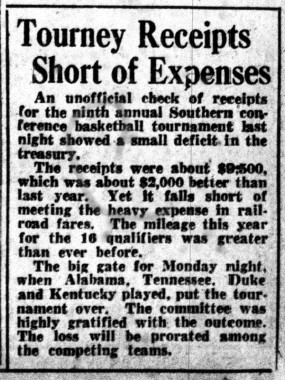 |
After the US stock market crash in October 29, 1929, the country began a deep economic slide which became known as the Great Depression. The effects were felt throughout all of society and the Southern Conference basketball tournament was no exception. One effect was the continued pressure to cut expenses, which included the oft-discussed option of splitting the vast conference into more geographically-appropriate organizations.
![]()
 |  |  |
| 1929 | Main | 1931 |
![]()
Please send all additions/corrections to